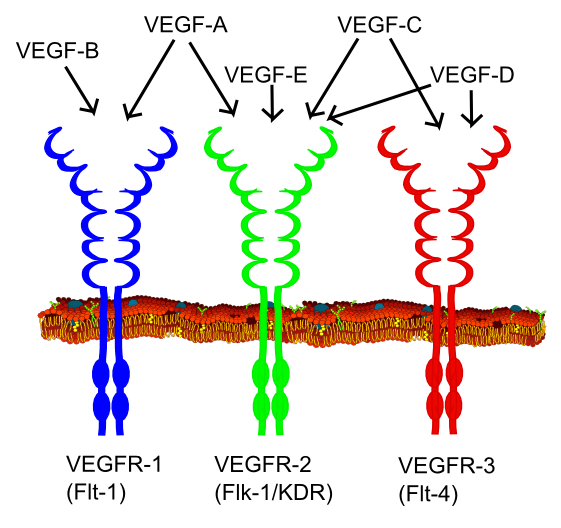Platelet-derived growth factor (PDGF is one of the numerous growth factors that regulate cell growth and division. In particular, it plays a significant role in blood vessel formation (angiogenesis), the growth of blood vessels from already-existing blood vessel tissue (Yu et al., 2003).
Vascular endothelial growth factor (VEGF), which is structurally related to PDGF, is a key regulator of embryonic vasculogenesis and angiogenesis under physiological and pathological conditions (Ferrara, 2004). VEGF is a potent and specific mitogen for vascular endothelial cells (Conn et al., 1990), and is also known as vascular permeability factor due to its ability to stimulate vascular leakage (Keck et al., 1989).
The biological properties of VEGF are mediated by three related receptor tyrosine kinases; fms-like tyrosine kinase-1 (Flt-1/VEGFR-1), kinase insert domain-containing receptor (KDR/VEGFR-2) and fms-like tyrosine kinase-4 (Flt-4//VEGFR-4).
|
|

VEGF receptors. Snake VEGFs (VEGF-F subtype) are not represented here, but mainly stimulate VEGFR-1 or VEGFR-2. (Image from Wikimedia licensed under Creative Commons)
|